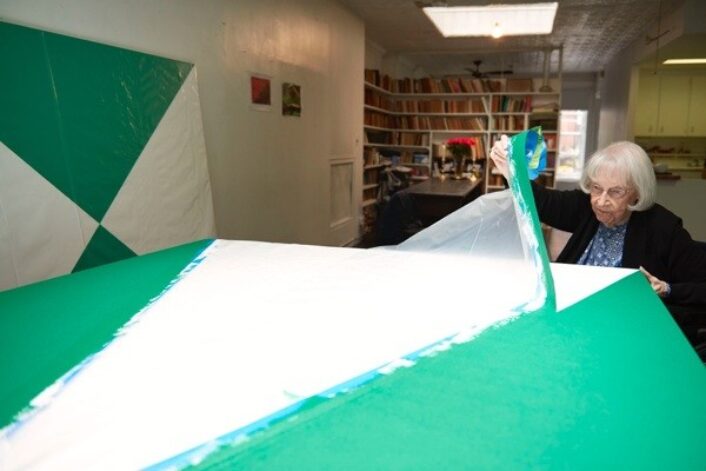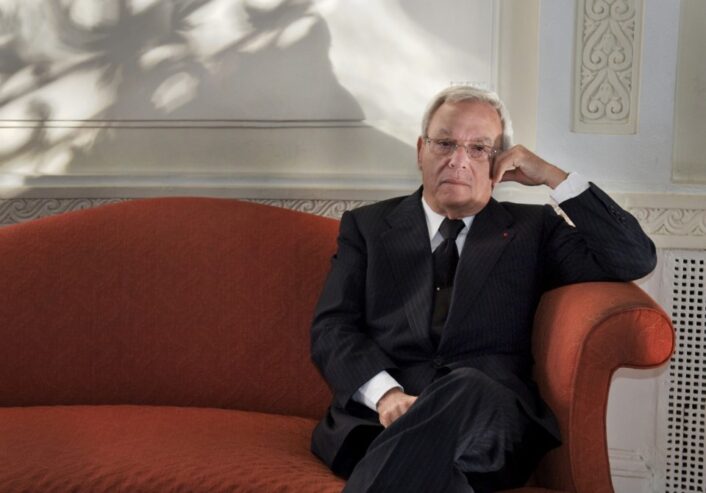A video about Herrera’s Estructuras Monumentales. Video courtesy of: Vimeo
Fine Art
Carmen Herrera
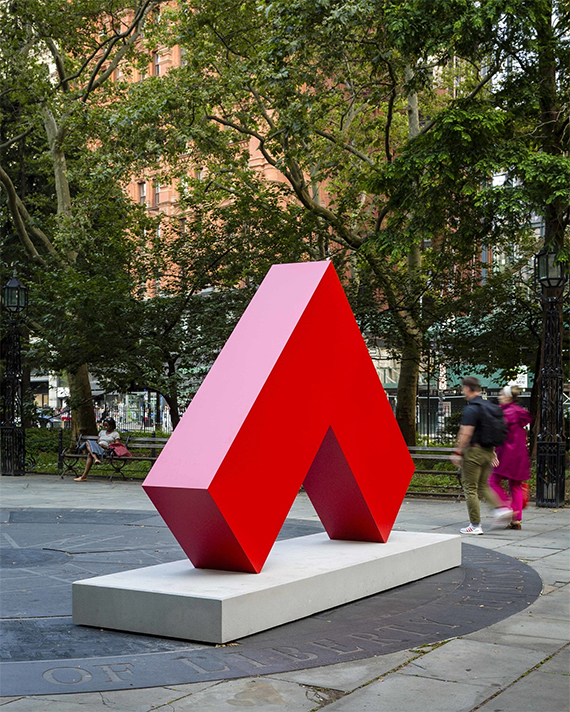
“Angulo Rojo”, 2017. Aluminum painted with red acrylic paint. Dimensions: 121 inches x 84 inches x 19 inches. Image courtesy of: Architectural Digest, photographed by: Nicholas Knight
At 104-years-old, the Cuban-born, New York City-based Carmen Herrera is finally getting the spotlight she deserves. The minimalist artist has been making art for over seventy years…but it was just fifteen years ago that Herrera sold her first painting.
Recently, five of her three-dimensional sculptures were part of an ambitious New York City Public Art Fund project titled “Estructura Monumentales”. For four months, the five sculptures were displayed at City Hall Park in Manhattan. Specifically, these sculptures are as well known as they were heavily influenced by Herrera’s architectural training. Herrera started this series in the 1960s with a group of diagrammatic sketches. Herrera envisioned large-scale monochromatic sculptures that extended her paintings into three-dimensional pieces.
Herrera’s “banner year” was 2015 and started out when a documentary film by Alison Klayman opened. The film features Herrera, at one hundred-years-old, working at her East 19th Street loft. A significant retrospective at the Whitney Museum titled, “Lines of Sight” followed. The year ended with a bang for Herrera who was then part of an attention-grabbing exhibition at Lisson Gallery’s New York City locale.
Herrera developed her unique style in Paris, after moving to the “City of Lights” following World War II. When she moved to New York City in the 1950s and settled permanently, she became close with many prominent artists…including Mark Rothko. Nevertheless, she continued to be overlooked until she was in her eighties. Alex Logsdail, executive director of Lisson Gallery, which represents Herrera said, “Being a female Cuban painter was a very hard thing at that time. People didn’t believe that women could paint. There was a lot of anti-Cuban sentiment. It was a very challenging time to be Carmen Herrera.”
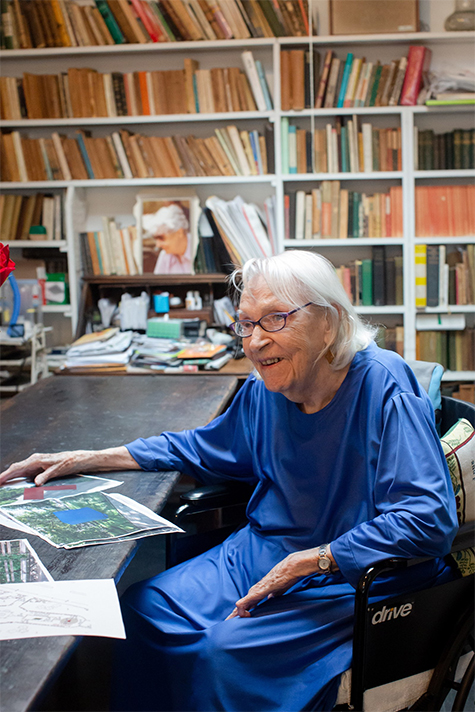
Herrera at her studio. Image courtesy of: Architectural Digest, photographed by: Liz Ligon
The “Lines in Sight” exhibition at the Whitney Museum covered Herrera’s career from 1948-1978, when she was 33-63 years old. She married an American schoolteacher and immigrated from Havana to the United States. In between, the two moved to Paris for two years where Herrera developed her method of abstraction. Using tape to form precise lines on canvas, Herrera created minimal, geometric compositions.
Herrera once said, “I believe that I will always be in awe of the straight line, its beauty is what keeps me painting.”
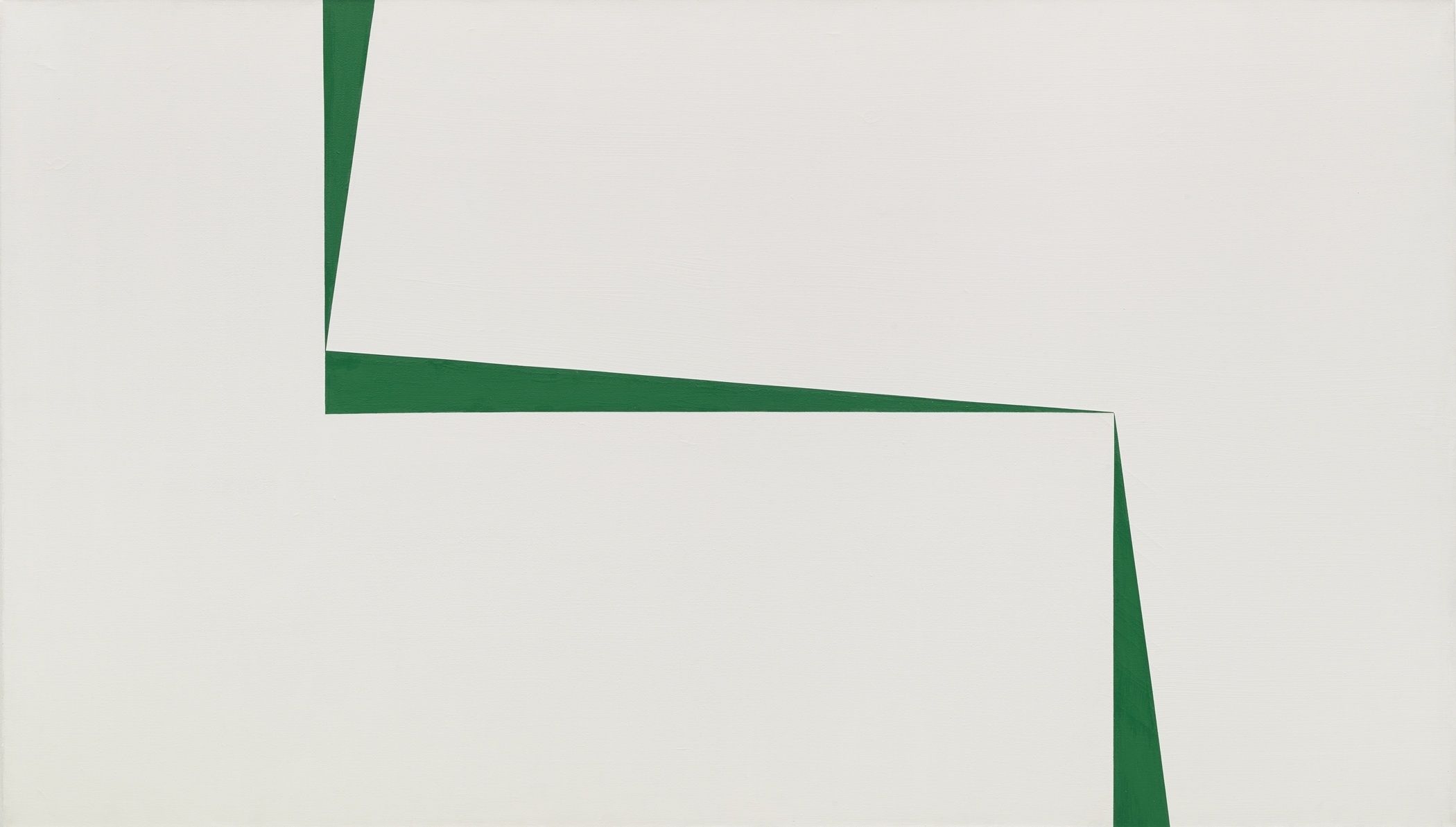
“Blanco y Verde”, 1966-67. Acrylic on canvas. Dimensions: 40 inches x 70 inches. The market considers this Herrera’s most important period of work. The piece above sold at a Sotheby’s auction in March for $2.9 million. Image courtesy of: Whitney Museum of American Art, photographed by: Ron Amstutz
Herrera considered her twelve year period, “Blanco y Verde”, as her most important. In this series of paintings, sparse slivers of green are set against a white canvas and these shapes make the viewer wonder: maybe it is the opposite… thin triangles of white against a green background? The result of these dynamic works asks the viewer to demystify the shifting relationship between color and form.

“Friday”, 1978. Acrylic on canvas. Dimensions are: 62 inches × 42 inches. Image courtesy of: Wallpaper
It is clear to the art historians of today that Herrera was ahead of her time. People expected Herrera to paint “Cuban landscapes or flowers in the tropics” because she was a female immigrant from Cuba who spent time in Paris. One gallery owner told her, “You can paint rings around the men artists I have, but I’m not going to give you a show because you’re a woman.”
Luckily Herrera’s self-esteem and self-worth were strong and she continued to persevere, to thrive. At that time, many male artists, notably Ellsworth Kelly who had a very similar style, enjoyed success. Nevertheless, Herrera continued to paint her striking canvases of strong lines and colors. Thank goodness Herrera is able to get some of the recognition she well deserves.
